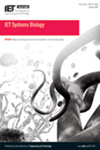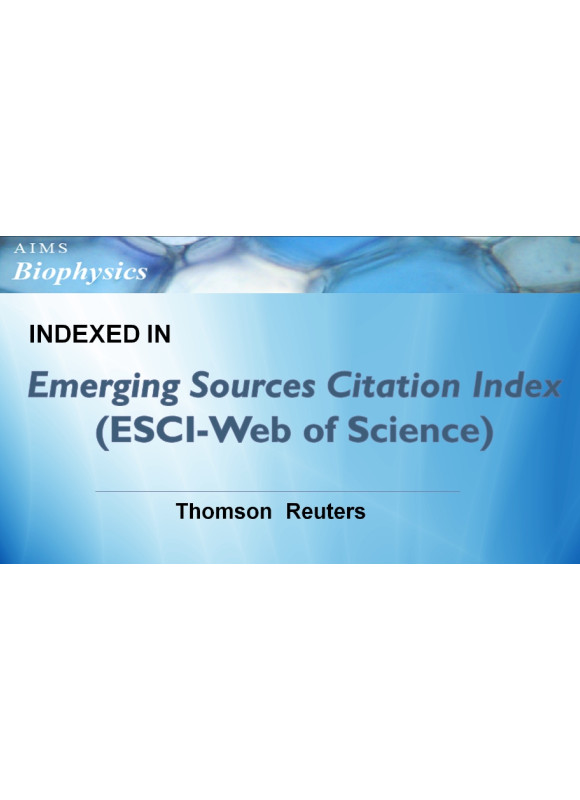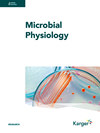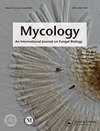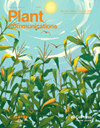Iet Systems BiologySCIE
国际简称:IET SYST BIOL 参考译名:系统生物学
- 基本信息:
- ISSN:1751-8849
- E-ISSN:1751-8857
- 是否OA:开放
- 是否预警:否
- TOP期刊:否
- 出版信息:
- 出版地区:ENGLAND
- 出版商:Wiley
- 出版语言:English
- 出版周期:Bi-monthly
- 出版年份:2007
- 研究方向:生物-数学与计算生物学
- 评价信息:
- 影响因子:1.9
- H-index:43
- CiteScore指数:4.2
- SJR指数:0.365
- SNIP指数:0.605
- 发文数据:
- Gold OA文章占比:79.03%
- 研究类文章占比:100.00%
- 年发文量:27
- 自引率:0.0434...
- 开源占比:0.3896
- 出版撤稿占比:0
- 出版国人文章占比:0.17
- OA被引用占比:0.3945...
英文简介Iet Systems Biology期刊介绍
IET Systems Biology covers intra- and inter-cellular dynamics, using systems- and signal-oriented approaches. Papers that analyse genomic data in order to identify variables and basic relationships between them are considered if the results provide a basis for mathematical modelling and simulation of cellular dynamics. Manuscripts on molecular and cell biological studies are encouraged if the aim is a systems approach to dynamic interactions within and between cells.
The scope includes the following topics:
Genomics, transcriptomics, proteomics, metabolomics, cells, tissue and the physiome; molecular and cellular interaction, gene, cell and protein function; networks and pathways; metabolism and cell signalling; dynamics, regulation and control; systems, signals, and information; experimental data analysis; mathematical modelling, simulation and theoretical analysis; biological modelling, simulation, prediction and control; methodologies, databases, tools and algorithms for modelling and simulation; modelling, analysis and control of biological networks; synthetic biology and bioengineering based on systems biology.
期刊简介Iet Systems Biology期刊介绍
《Iet Systems Biology》自2007出版以来,是一本生物学优秀杂志。致力于发表原创科学研究结果,并为生物学各个领域的原创研究提供一个展示平台,以促进生物学领域的的进步。该刊鼓励先进的、清晰的阐述,从广泛的视角提供当前感兴趣的研究主题的新见解,或审查多年来某个重要领域的所有重要发展。该期刊特色在于及时报道生物学领域的最新进展和新发现新突破等。该刊近一年未被列入预警期刊名单,目前已被权威数据库SCIE收录,得到了广泛的认可。
该期刊投稿重要关注点:
Cite Score数据(2024年最新版)Iet Systems Biology Cite Score数据
- CiteScore:4.2
- SJR:0.365
- SNIP:0.605
| 学科类别 | 分区 | 排名 | 百分位 |
| 大类:Mathematics 小类:Modeling and Simulation | Q2 | 100 / 324 |
69% |
| 大类:Mathematics 小类:Biotechnology | Q3 | 160 / 311 |
48% |
| 大类:Mathematics 小类:Genetics | Q3 | 201 / 347 |
42% |
| 大类:Mathematics 小类:Molecular Biology | Q3 | 282 / 410 |
31% |
| 大类:Mathematics 小类:Cell Biology | Q3 | 208 / 285 |
27% |
CiteScore 是由Elsevier(爱思唯尔)推出的另一种评价期刊影响力的文献计量指标。反映出一家期刊近期发表论文的年篇均引用次数。CiteScore以Scopus数据库中收集的引文为基础,针对的是前四年发表的论文的引文。CiteScore的意义在于,它可以为学术界提供一种新的、更全面、更客观地评价期刊影响力的方法,而不仅仅是通过影响因子(IF)这一单一指标来评价。
中科院SCI分区Iet Systems Biology 中科院分区
| 大类学科 | 分区 | 小类学科 | 分区 |
| 生物学 | 4区 | CELL BIOLOGY 细胞生物学 MATHEMATICAL & COMPUTATIONAL BIOLOGY 数学与计算生物学 | 4区 4区 |
中科院分区表 是以客观数据为基础,运用科学计量学方法对国际、国内学术期刊依据影响力进行等级划分的期刊评价标准。它为我国科研、教育机构的管理人员、科研工作者提供了一份评价国际学术期刊影响力的参考数据,得到了全国各地高校、科研机构的广泛认可。
中科院分区表 将所有期刊按照一定指标划分为1区、2区、3区、4区四个层次,类似于“优、良、及格”等。最开始,这个分区只是为了方便图书管理及图书情报领域的研究和期刊评估。之后中科院分区逐步发展成为了一种评价学术期刊质量的重要工具。
JCR分区Iet Systems Biology JCR分区
| 按JIF指标学科分区 | 收录子集 | 分区 | 排名 | 百分位 |
| 学科:CELL BIOLOGY | SCIE | Q4 | 176 / 205 |
14.4% |
| 学科:MATHEMATICAL & COMPUTATIONAL BIOLOGY | SCIE | Q3 | 36 / 65 |
45.4% |
| 按JCI指标学科分区 | 收录子集 | 分区 | 排名 | 百分位 |
| 学科:CELL BIOLOGY | SCIE | Q4 | 162 / 205 |
21.22% |
| 学科:MATHEMATICAL & COMPUTATIONAL BIOLOGY | SCIE | Q4 | 53 / 65 |
19.23% |
JCR分区的优势在于它可以帮助读者对学术文献质量进行评估。不同学科的文章引用量可能存在较大的差异,此时单独依靠影响因子(IF)评价期刊的质量可能是存在一定问题的。因此,JCR将期刊按照学科门类和影响因子分为不同的分区,这样读者可以根据自己的研究领域和需求选择合适的期刊。
发文数据
- 国家/地区数量
- India41
- CHINA MAINLAND26
- Iran19
- Pakistan12
- USA11
- Turkey8
- Australia4
- Romania4
- Italy3
- Saudi Arabia3
本刊中国学者近年发表论文
-
1、Multiscale modeling biological systems.
Author: Liu ZP, Chen L.
Journal: IET Syst Biol. 2016 Feb;10(1):1. doi: 10.1049/iet-syb.2016.0002. No abstract available.
-
2、Crosstalk between pathways enhances the controllability of signalling networks.
Author: Wang D, Jin S, Zou X.
Journal: IET Syst Biol. 2016 Feb;10(1):2-9. doi: 10.1049/iet-syb.2014.0061.
-
3、Kinetic model of metabolic network for xiamenmycin biosynthetic optimisation.
Author: Xu MJ, Chen YC, Xu J, Ao P, Zhu XM.
Journal: IET Syst Biol. 2016 Feb;10(1):17-22. doi: 10.1049/iet-syb.2014.0054.
-
4、Knowledge-based three-body potential for transcription factor binding site prediction.
Author: Qin W, Zhao G, Carson M, Jia C, Lu H.
Journal: IET Syst Biol. 2016 Feb;10(1):23-9. doi: 10.1049/iet-syb.2014.0066.
-
5、Extended particle swarm optimisation method for folding protein on triangular lattice.
Author: Guo Y, Wu Z, Wang Y, Wang Y.
Journal: IET Syst Biol. 2016 Feb;10(1):30-3. doi: 10.1049/iet-syb.2015.0059.
-
6、Sparse electrocardiogram signals recovery based on solving a row echelon-like form of system.
Author: Cai P, Wang G, Yu S, Zhang H, Ding S, Wu Z.
Journal: IET Syst Biol. 2016 Feb;10(1):34-40. doi: 10.1049/iet-syb.2015.0002.
-
7、Detecting small attractors of large Boolean networks by function-reduction-based strategy.
Author: Zheng Q, Shen L, Shang X, Liu W.
Journal: IET Syst Biol. 2016 Apr;10(2):49-56. doi: 10.1049/iet-syb.2015.0027.
-
8、Graph theory and stability analysis of protein complex interaction networks.
Author: Huang CH, Chen TH, Ng KL.
Journal: IET Syst Biol. 2016 Apr;10(2):64-75. doi: 10.1049/iet-syb.2015.0007.
投稿常见问题
-
请问这本期刊属于什么级别呢?可用于职称评定吗?
一般刊物只分省级、国家级、核心,期刊本身是没有几类划分的,具体是几类或者几级,您可以对照单位的分类文件确认一下。Iet Systems Biology杂志是由Wiley出版的一本SCIE,可用于职称评定。
-
你们能够提供哪些核心期刊的咨询服务?
大多数核心期刊我们都是可以提供咨询服务的。目前核心期刊主要分为以下几类:1.国内核心:按照权威度排序,社科类:南大核心>南大扩展>北大核心>科技核心 按照权威度排序。工科类:CSCD C库>CSCD E库(相当于CSCD扩展)>北大核心>科技核心。2.国外核心(全英文):按照权威度排序为:SSCI=SCI>EI>ISTP=CPCI。
-
想快速发表,可以加急吗?
为了确保您的职称评定顺利进行,我们建议提前半年到一年开始准备,这样能够保证有充足的时间来处理所有相关事宜。如果客户需要加急服务,我们会与杂志社进行沟通,以确定是否可以提供加急服务。请注意,如果确认可以加急,可能会收取一定的加急费用。
-
你们提供的服务可以确保稿件被发表吗?
期刊编辑会综合考虑多个因素,如发表范围、学术价值和原创性等,对稿件进行综合评估。尽管任何机构均无法保证每篇稿件都会被发表,但我们可以用专业知识和丰富经验,协助您理解并遵循期刊的发表要求,从而提高您的稿件被发表的机率。
-
请问期刊发表的费用如何?
期刊发表的费用因期刊不同而异。根据您的需求,我们会为您推荐性价比最高的期刊,并提供专业的期刊供您选择。一般来说,只要符合职称要求,大多数作者都会选择性价比最高的期刊作为意向期刊进行重点咨询。我们会为您提供详细的期刊信息和费用说明,以确保您能够做出明智的选择。
-
如果稿件被拒,未能成功发表,费用是否可以退还?
一般来说,我们推荐的期刊和您的专业方向、文章情况都是匹配的,极少出现稿件被拒的情况。如果稿件被拒,期刊编辑会提供详细的拒稿信和建议,以帮助您了解拒稿原因并改进您的稿件。关于退款政策,具体情况可能因期刊不同而异,请您咨询我们的工作人员以获取详细信息。
